Ralli Quays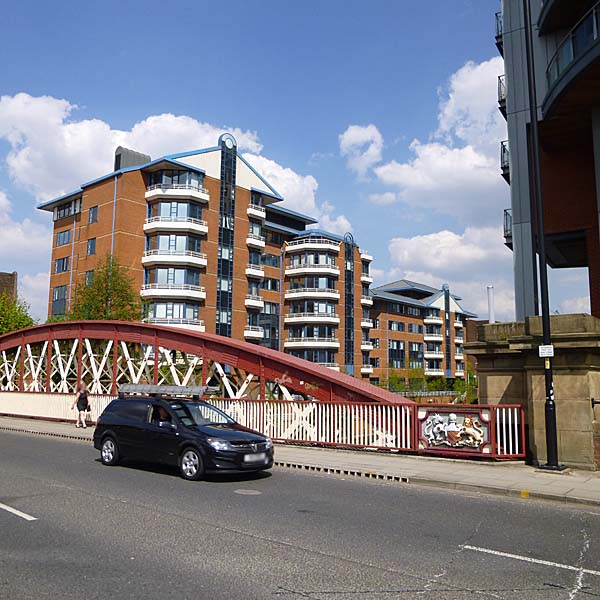 Ralli Quays is an office complex made
up of two buildings, known as the East and West Blocks,
designed by Fairhurst Architects for H. M. Customs and
Excise. The buildings were erected between 1991
and 1993 and according to the governmentbuildings.co.uk
website the occupants of the buildings include HMRC, the
Crown Prosecution Service and the UK Border Agency.
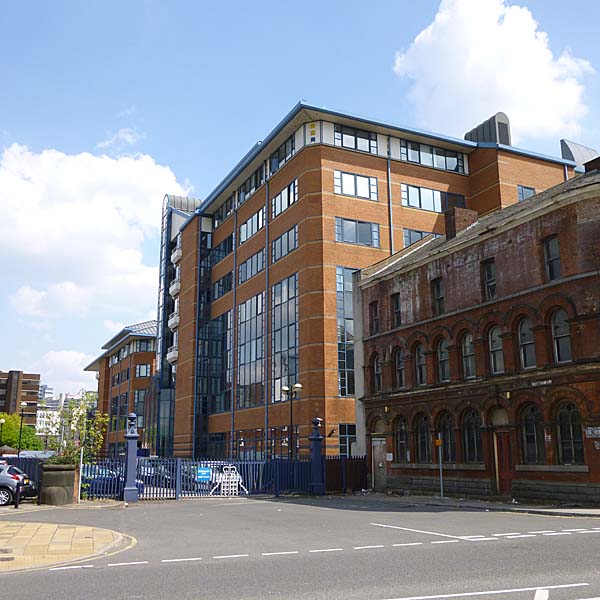 According to John J Parkinson,
writing in his "Manchester - An Architectural History"
this was one of the first buildings to actually face the
River Irwell rather than turning its back to it. I
have a suspicion that the name Ralli Quay may derive
from the famous Ralli Brothers, merchant traders who had
their Manchester headquarters in Harvester House on
Peter Street. The brothers
traded in a wide variety of cargo shipping it to and
from bases in Constantinople, Romania, Egypt, Russia,
London, Trieste, Marseilles and Vienna.
The Ralli family had a talent for foreseeing problems in
world trade. In 1851 they opened a branch in India at
the ideal moment to be able to take advantage of the
need for a substitute for Russian hemp when it became
scarce as a result of the Crimean War. Then, in 1861 a
Bombay office enabled them to provide Indian cotton to
Liverpool to replace the cotton from the US southern
states when the Union Army blockaded the Confederate
ports.
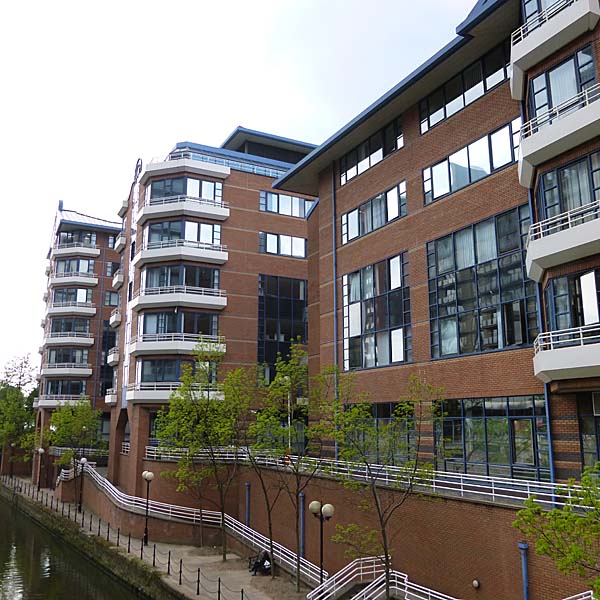 The building skirts the Irwell but it also sits on the edge of what was once the New Bailey Prison. The 1844 map of Manchester and Salford shows the prison and, in the location of Ralli Quays, a building that contained the Irwell Foundry and the Irwell Marble Works. 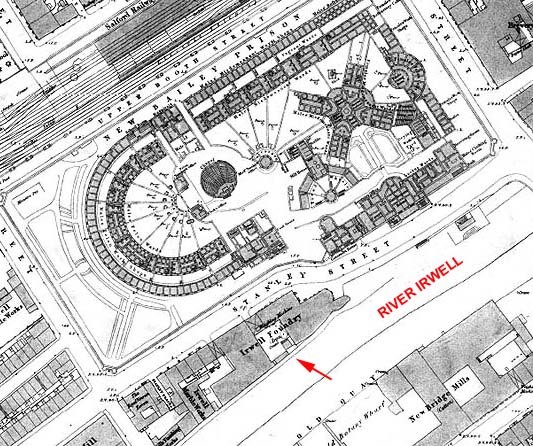 The engraving below shows the
prison on the right and ahead on the left the
buildings that occupied the Ralli Quays site at that
time.
 After the prison was demolished the
land became a large railway goods yard occupying most of
the area between the railway viaduct and the
river. In the aerial photograph below from the
1940s, you can see the building that occupied the Ralli
Quays site indicated by a white arrow.
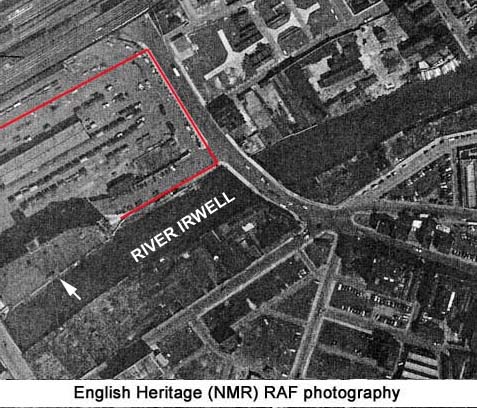 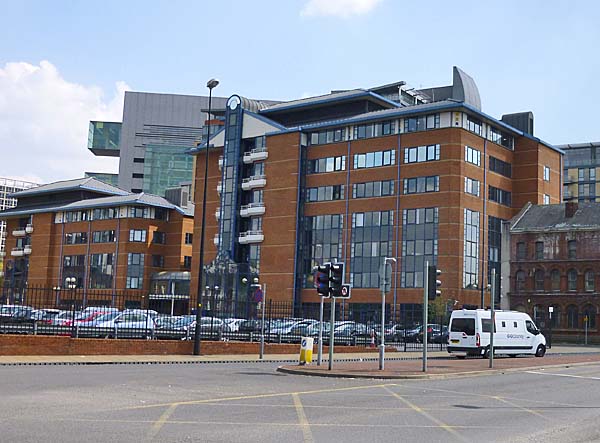  |